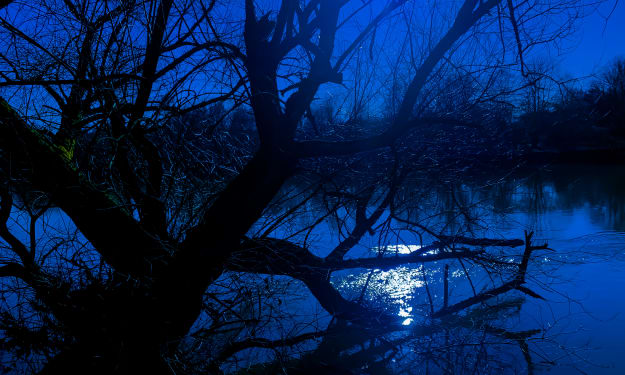How to Take Amazing Macro Photos of Flowers
Sharp and vibrant closeups of flowers aren’t as hard as you may think

Technically, macro photography means taking images of something at a one to one magnification, in other words, life-size or larger. However, by widespread use, it has come to mean taking photos of anything small at a very close distance. Probably the two most popular types of macro photography are insects and flowers.
And since most everyone has access to flowers and most people aren’t afraid of them (although snapdragons sound a little scary), this article will focus (pun intended) on flowers.
This article will assume you have a working knowledge of your camera and basic photography terminology.
Equipment
Any camera with interchangeable lenses will do. Macro photography is more about lens and technique than the camera body. Some photographers will prefer a crop-sensor since it gives the perception of a longer focal length, while others will prefer a full-frame due to a larger sensor, more detail, and better low-light capability.
I suggest using whatever camera you have.
Macro lenses will be designated as such somewhere on the barrel of the lens, and will also mention 1:1 magnification. For the purposes of this tutorial, don’t worry if you don’t have one. They tend to be more expensive, and until you decide you want to specialize in macro photography in general or flowers in particular, it may not be worth the money.
There is equipment that will allow you to use any lens as a macro lens, such as filters, extension tubes, and reverse adapters. For now, use whatever lens you have with the shortest minimum focal length, and don’t worry about specialized equipment.
You want to be able to get in tight and have the subject in focus. The lens I am currently using only has a 1:2 magnification and a minimum distance of about one foot. This is by no definition a macro lens, but it takes fantastic floral photos.
To achieve sharp focus and reduce any motion blur from flower motion, you will need a flash. Whether you shoot it on camera or not, you need some sort of diffuser. The easiest method for someone working alone is to have your flash mounted on the hot-shoe with a mini softbox mounted on it.
Composition
Before you get into fine-tuning your image, take a look at the big picture, pun intended. Not just for flowers or macro, but any time you are photographing anything, look everywhere but at the subject first.
Look at the background and make sure there isn’t anything distracting. You don’t want bright spots of light shining through to detract from your flower. You also don’t want any very large dark areas to draw the eye away. We’ll cover depth of field next, but make sure your background is soft and out of focus.
Also, look at the flower from different angles. It’s fine to take the standard straight on shot showing the full bloom, but mix it up some. Shoot it from the side. Get down low and shoot the underside of the flower. Just remember to check the background and make sure it works.

Depth of Field
Three factors control depth of field: the focal length of your lens, the aperture you are shooting at, and the distance from the lens to subject. (Actually, it’s the distance from the sensor to the subject, but that’s splitting hairs.)
Since you are shooting macro, by definition, you are going to be very close to the subject, so that narrows the depth of field down immediately. Your focal length is probably somewhere in the 35–100mm range, but you aren’t going to change that unless you have multiple macro lenses, or are using a zoom lens. I strongly suggest using a prime lens for macro photography.
So that leaves us with aperture. The main issue with macro photography is that, since you are shooting so close, you already have a very narrow depth of field, probably less than an inch. So the normal inclination is to stop down the aperture to give a broader depth of field, but that can leave you exposed (another pun, sorry) to a too slow shutter speed.
That’s where your flash comes in. Having a flash removes shutter speed from the exposure equation, but there is still a problem. Even the tiniest breeze is going to set that flower in motion. The flash will freeze that motion, but because of a slow shutter speed, there may still be enough ambient light to show the movement. This will appear in your image as ghosting. The flower will be sharp and well lit, but you may see blurred edges from the ambient light exposing the motion.
The obvious solution is to shoot on a calm day. But a day with absolutely no wind is pretty rare. Shooting early in the morning will help somewhat as there tends to be less breeze then. You can also use a piece of wire to anchor the flower and prevent it from moving. Or, you will have to experiment with variations in your flash, shutter speed, and aperture to eliminate the ghosting.
Focus Point
The focus point goes hand in hand with depth of field, but you need to choose your location carefully. You are still likely to end up with a fraction of an inch in perfect focus, so you need to make sure you are focused on the right spot. You may want to focus on the nearest point, such as the stamen, and let the petals fall slightly out of focus. Or focus on the petals so that the flower is in focus, but the stamens are a bit blurry.
It will be challenging to see the exact focus point as you shoot, so use live view, and chimp as necessary. Also, take a lot of shots. With all the variables involved, nailing the perfect image can be hit or miss. Just as you should shoot at different angles, try mixing up the focal points a bit. You never know what might resonate with you once you get back to the computer.
Macro photography, in general, and photos of flowers, in particular, can be both rewarding and frustrating. But just like any other genre of photography, knowledge, experience, and practice goes a long way. Keep practicing and learn from your mistakes, and you will be posting sharp, vibrant images of flowers in no time.
If you enjoyed this article, please click the Heart, and if you really liked it, consider dropping me a tip below. Thanks for reading.
About the Creator
Darryl Brooks
I am a writer with over 16 years of experience and hundreds of articles. I write about photography, productivity, life skills, money management and much more.






Comments
There are no comments for this story
Be the first to respond and start the conversation.